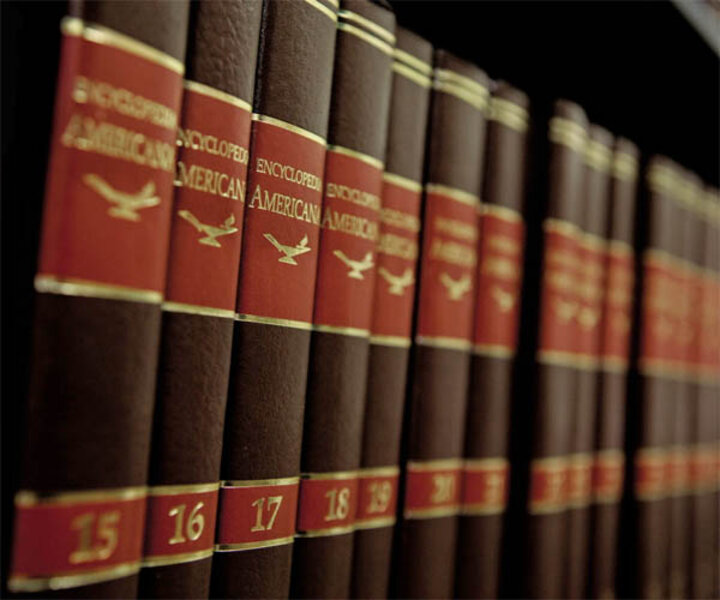Encyclopedia Britannica puts an end to print publishing
Loading...
Whether it was a prized possession paid for in installments and lovingly displayed on the top shelf, a neglected doorstop, or simply non-existent in your household, you undoubtedly grew up familiar with the sight of the Encyclopaedia Britannica. But now the days of the handsome gold-lettered reference books are over.
Encyclopaedia Britannica Inc. announced Tuesday it will stop publishing print editions of its signature product for the first time in its 244-year history. In an acknowledgment of the shifting media landscape and the increasing reliance on digital references, the company said its current encyclopedia – the 32-volume, 129-pound 2010 edition – will be unavailable once the existing stock runs out. (If you’re interested, it’s yours for $1,395 and there are only 4,000 sets left.) The digital version of the encyclopedia, however, will live on.
“This has nothing to do with Wikipedia or Google,” said Encyclopaedia Britannica Inc. President Jorge Cauz in an interview with the AP. “This has to do with the fact that now Britannica sells it digital products to a large number of people.”
Despite his comments, it’s easy to see how Wikipedia, the 11-year-old crowd-sourced encyclopedia, and the rise of similar online research materials have eaten into Encyclopaedia Britannica’s market. As The LA Times’s Jacket Copy blog puts it, “The 11-year-old crowd-sourced encyclopedia is online, and it's free. Encyclopaedia Britannica's most recent edition sells for $1,395.”
Though Wikipedia and Google may be the prevailing research modes of choice today, those who came of age before the instant-access of Internet retain a sense of attachment and goodwill toward Britannica and the authority and reliability its bound volumes represented.
The print form of Encyclopaedia Britannica was first published in Edinburgh, Scotland, in 1768. Sales of Britannica peaked in 1990 with 120,000 sets sold in the US. In contrast, Britannica has sold about 8,000 sets of its latest edition, the 2010 set, and has 4,000 more in stock.
Today, print encyclopedias account for less than 1 percent of Britannica’s revenue, reports The New York Times. (Instead, some 85 percent of the revenue comes from educational products and 15 percent from the $70 subscription to its website, which about half a million households pay.)
“A printed encyclopedia is obsolete the minute that you print it," Cauz told the AP. "Whereas our online edition is updated continuously.... The sales of printed encyclopedias have been negligible for several years. We knew this was going to come.”
Indeed, most libraries have shifted the bulk of their resources to digital materials, though print reference materials continue to be available. And though older generations uncomfortable with digital technology prefer print reference materials, the vast majority of students and younger generations simply go online, where material is readily accessible and continuously updated – if slightly less authoritative.
Nonetheless, the discontinuance of the flagship reference set will be mourned by those for whom “having the Encyclopaedia Britannica on the bookshelf was akin to a station wagon in the garage or a black-and-white Zenith in the den, a possession coveted for its usefulness and as a goalpost for an aspirational middle class,” writes The New York Times.
“It’s a rite of passage in this new era,” Cauz told The New York Times. “Some people will feel sad about it and nostalgic about it. But we have a better tool now. The Web site is continuously updated, it’s much more expansive and it has multimedia.”
Husna Haq is a Monitor correspondent.





